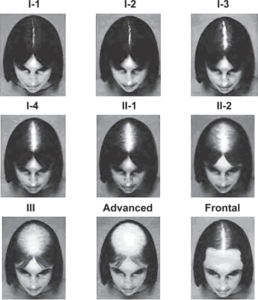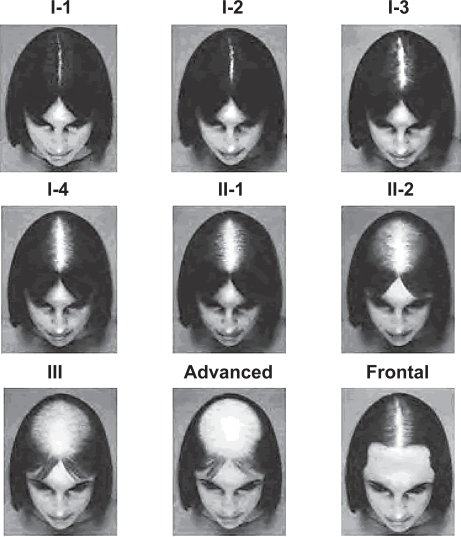Female baldness happens in more than one pattern. If you’re a woman with thinning scalp hair, you should seek trained advice. Female baldness isn’t as simply familiar as those in men.
Unlike baldness in men, female scalp baldness may usually begin at every age through fifty or later on may not have any clear hereditary organisation, and may not happen in a familiar “female-pattern alopecia” of diffuse thinning out of the scalp.
A female who notices the start of balding might not be sure if the loss will be transient or permanent. For example, if there was an event like pregnancy or sickness that might be connected with short lived hair thinning. If you’re losing scalp hair, you need to consult with a hair restoration consultant for an analysis and diagnosis. Self-diagnosis does not help much. Females have a tendency to have less clear patterns of baldness than men, and non-pattern kinds of baldness are way more frequent in ladies than in men. Diagnosis of alopecia in a girl should be conducted by an expert.
The likeliest reason for scalp alopecia is androgenetic alopecia, an inherited sensitiveness to the aftermath of androgens ( male hormones ) on scalp follicles. Nevertheless ladies with alopecia due to this cause typically don’t develop true hair loss in the patterns that happen in menfor example, girls seldom develop the “cue-ball” appearance frequently seen in male-pattern androgenetic alopecia.
Patterns of female androgenetic alopecia can alter significantly in appearance. Some common symptons are
- Thinning of hair over the whole scalp, with more visible thinning toward the back of the scalp.
- Thinning over the whole scalp, with more visible thinning toward the front of the scalp beyond the front hairline.
- Thinning over the whole scalp, with more thinning toward the front of the scalp, concerning and occasionally breaking the frontal hairline.

Savin scale showing stages of Female pattern baldness
In contrast to the case for men, thinning scalp hair in women due to androgenetic alopecia doesn’t regularly grow smaller in diameter ( miniaturize ). Females with baldness due to androgenetic alopecia have a tendency to have miniaturizing hairs of variable diameter over all area affected of the scalp. While miniaturizing hairs are a feature of androgenetic alopecia, miniaturization may be linked with other causes and isn’t in itself a diagnosis feature of androgenetic alopecia. In post-menopausal girls, for instance, hair may start to miniaturize and become tough to style.
The specific diagnosis should be done by a consultant hair restoration expert. It’s very important to notice that female pattern alopecia can begin as early as the late teens to early twenties in girls that have experienced early adolesence.
If not treated, this alopecia linked with early adolesence can progress to more complicated alopecia if it is not treated.
Solutions: In case where the baldness is already evident (visible), a customized hair piece can be made to cover the visible bald area, and give an increase to the density (in case of thinning hair). Contact Us for options available for pattern baldness


Recent Comments